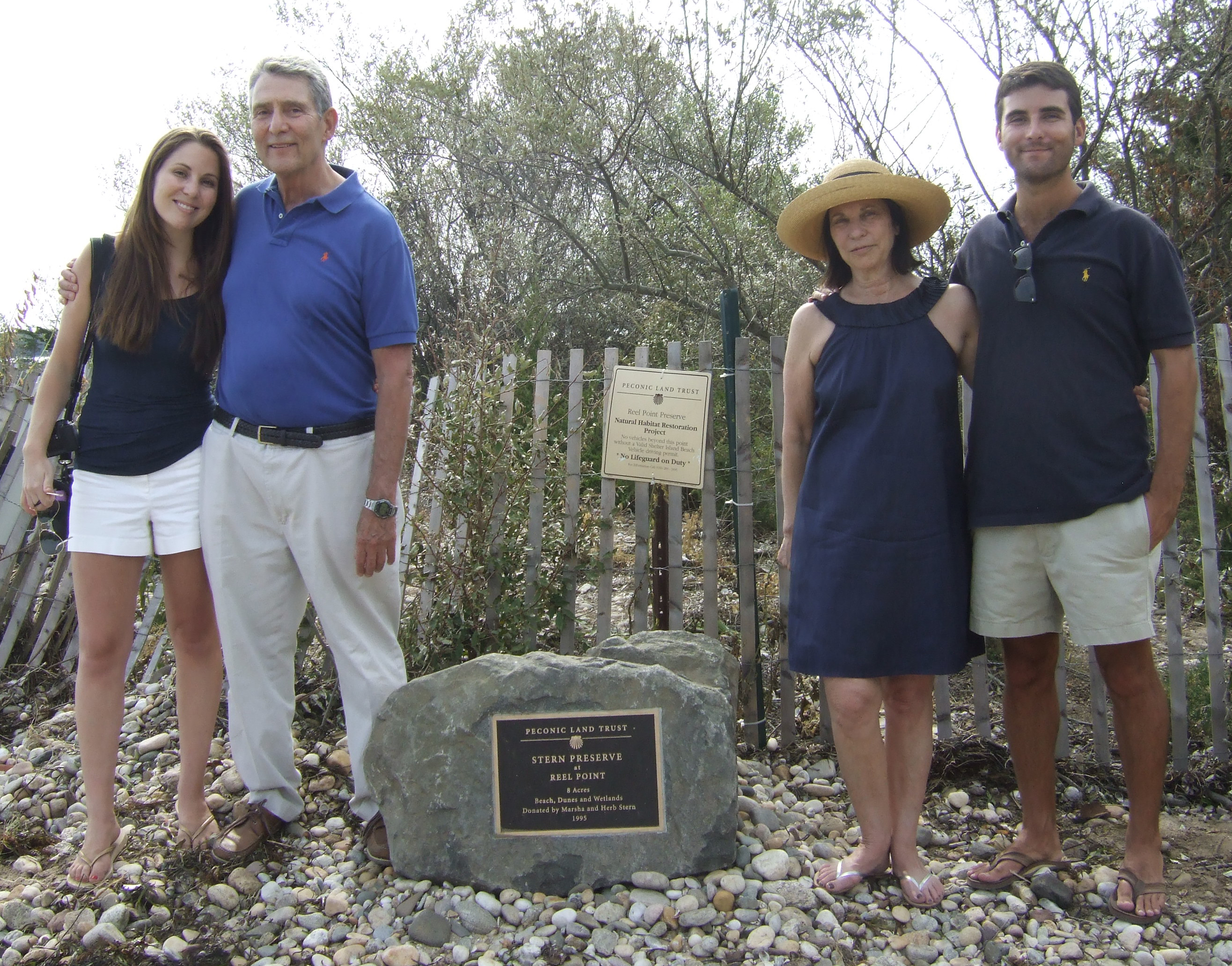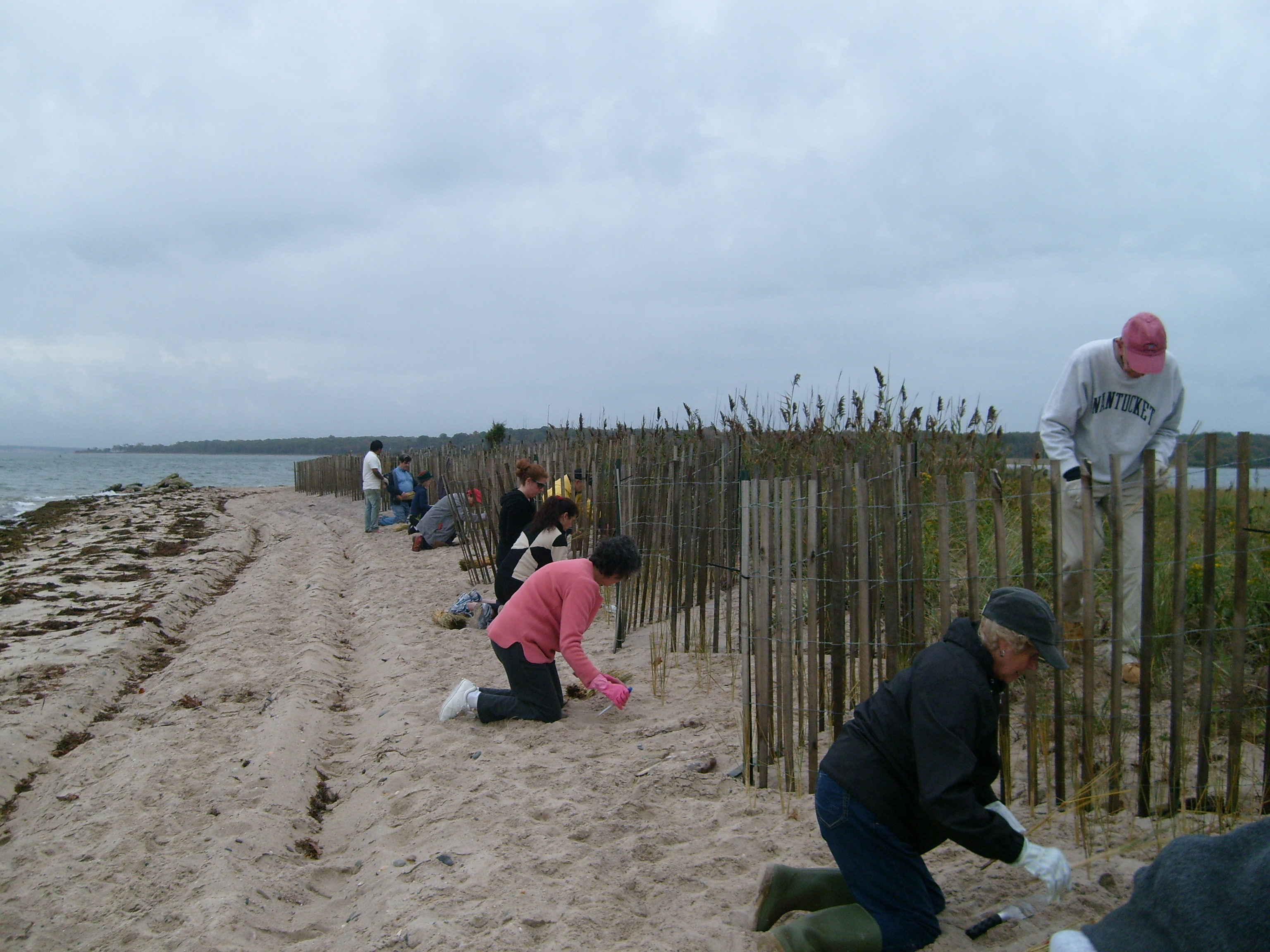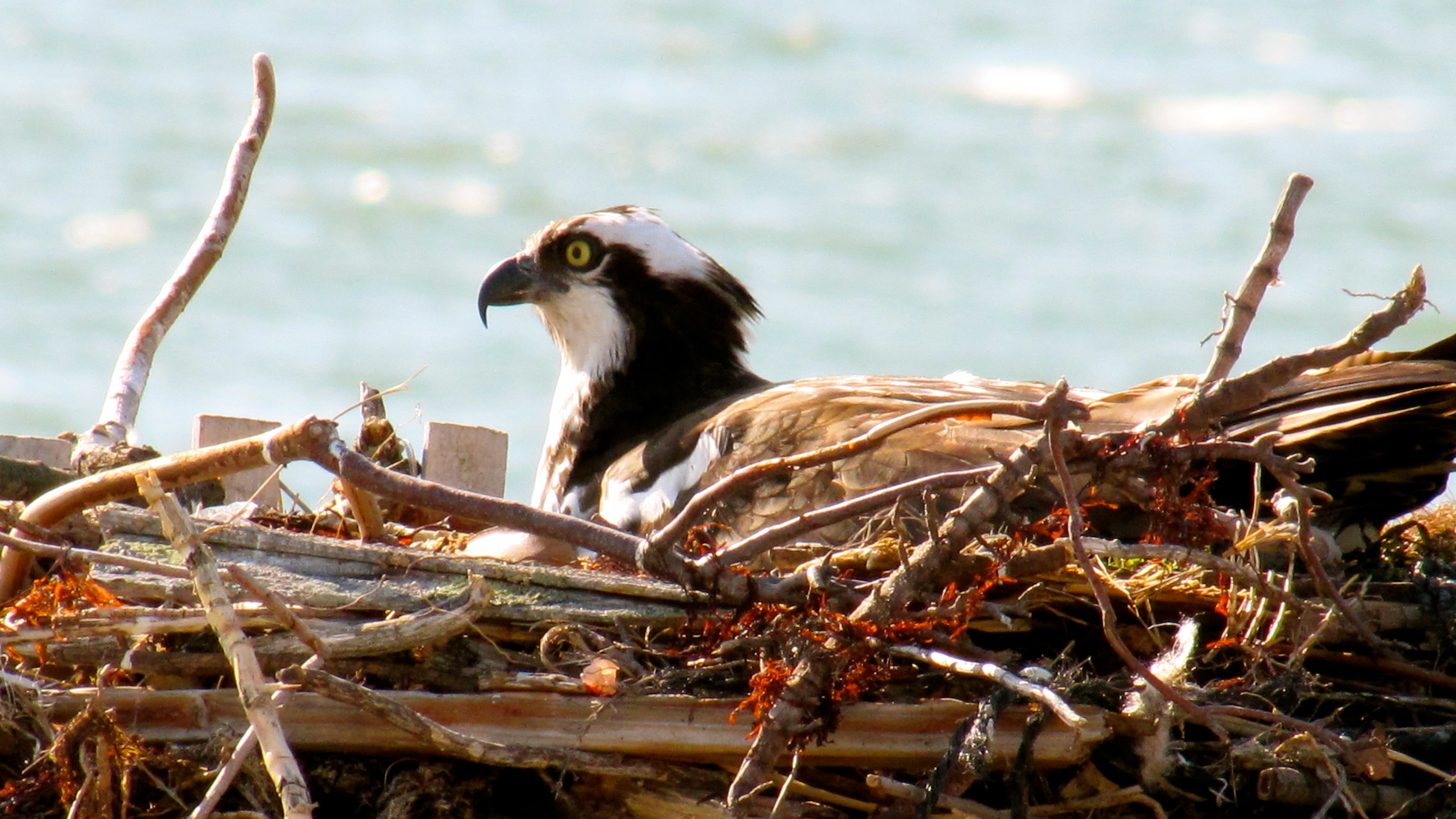Reel Point Preserve
About
The fragile sand peninsula of Reel Point Preserve, donated to the Peconic Land Trust in 1995 by Marsha and Herb Stern, is a beautiful wildlife habitat at the tip of Ram Island on Shelter Island. With American beach grass, seaside goldenrod, and bayberry, the peninsula is a haven for migratory birds and butterflies, including osprey, piping plovers and Monarchs.

The Stern family at the dedication of the preserve.

planting beach grass with neighbors from Ram Island


But its existence is threatened by heavy erosion caused by heavy winds and wave action, primarily during major storm events.
Over the years the Trust, in partnership with the Town of Shelter Island and neighbors from Ram Island, has worked to stabilize the land. We are currently strategizing with our private and governmental partners on the best ways to manage this important area in the future.
![block.image[0].title](/assets/images/Seaside-Goldenrod-at-Reel-Point.jpg)
Things To Do
Birdwatching
Photography
Sailing
Get Involved
Interested in honoring a loved one or commemorating a milestone? Support our Memorials at Preserves program and deepen your connection to this special place.

